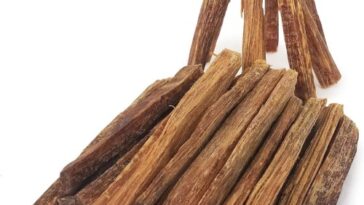Survival Essentials: How to Obtain Water from Trees and Vines
In a survival situation, water is your most crucial resource. Without it, survival becomes exponentially more difficult. While traditional sources like rivers, lakes, and streams are obvious choices, there’s another often-overlooked source: trees and vines. Yes, you read that right—nature can provide a lifeline in the form of water hidden within its botanical wonders. In this guide, we’ll explore how to safely extract water from trees and vines, including some species to look out for and the invaluable tool of a tree tap.
1. Understanding the Species:
Not all trees and vines are created equal when it comes to water extraction. Some species contain more water than others, and some might even be toxic. Here are a few examples of trees and vines known for their water-yielding properties:
- Maple Trees: Maple trees, particularly sugar maples, are renowned for their sap, which can be tapped for water. While the sugar content is usually concentrated during maple syrup production, the sap can serve as a potable water source.
- Birch Trees: Birch trees also produce sap that can be tapped for water. It’s slightly less sweet than maple sap but still provides hydration.
- Palm Trees: Palms, especially coconut palms, are well-known for their ability to yield water. Coconuts contain a refreshing liquid that’s safe to drink, provided they’re not spoiled.
- Vines: Certain vines, such as grapevines and wild grapevines, can contain water within their stems. While the extraction process might be a bit trickier, they can still offer a hydration source.
2. Extracting Water from Trees and Vines:
Once you’ve identified a suitable tree or vine, the next step is extracting the water. Here’s a general guide to tapping into nature’s hydration reserves:
- Gather Materials: You’ll need a sharp knife, container for collecting water, and possibly a length of tubing if you’re using a vine.
- Locate a Suitable Tree or Vine: Look for healthy specimens with abundant foliage, as this indicates a better chance of finding water.
- Prepare the Tap: If you’re using a tree tap, follow the manufacturer’s instructions for installation. Alternatively, for vines, make a diagonal cut near the base to allow water to flow.
- Collect the Water: Position your container beneath the tap or cut and wait for the water to start flowing. Depending on the tree or vine, this process may take some time.
- Filter and Purify: Even though the water is sourced from nature, it’s essential to filter and purify it before consumption. Use a cloth or bandana to filter out debris, then purify through boiling or using purification tablets if available.
3. The Importance of a Tree Tap:
A tree tap can be an invaluable tool in a survival scenario. These simple devices allow for efficient extraction of water from trees without causing extensive damage. By tapping into the tree’s natural sap flow, you can access clean, potable water without resorting to more destructive methods.
Tree taps typically consist of a small metal or plastic spout that’s inserted into a tree trunk, along with a collection container attached to collect the dripping sap. They’re designed to be minimally invasive, allowing the tree to continue its natural processes without significant harm.
In addition to providing a reliable water source, tree taps can also be reused multiple times, making them a sustainable option for long-term survival situations.
When faced with a survival situation, it’s essential to think outside the box when it comes to sourcing water. Trees and vines can provide a lifesaving source of hydration if you know where to look and how to extract it safely. By understanding which species to target and utilizing tools like tree taps, you can turn nature into your own personal oasis in even the most challenging environments. Stay resourceful, stay hydrated, and stay safe.





 No products in the cart.
No products in the cart.